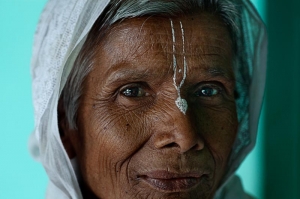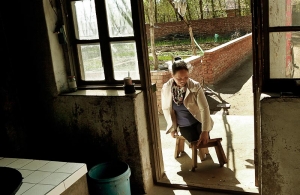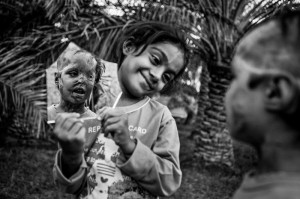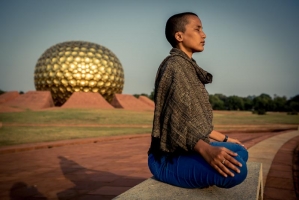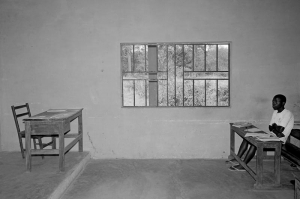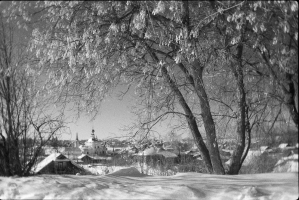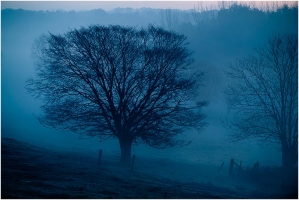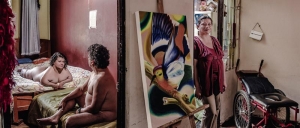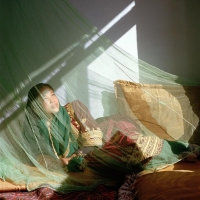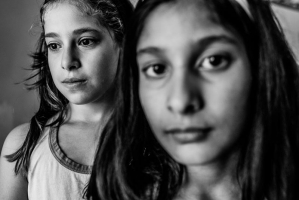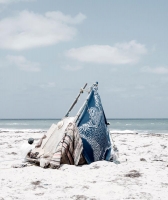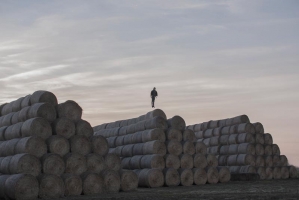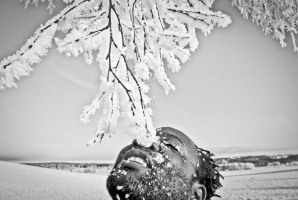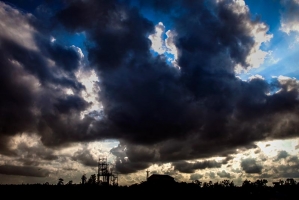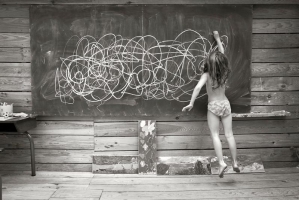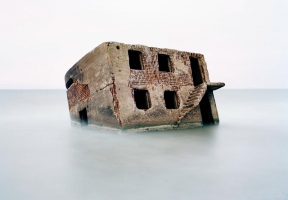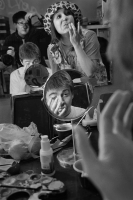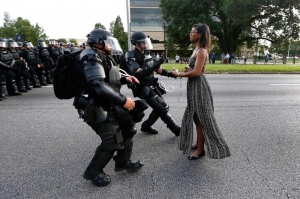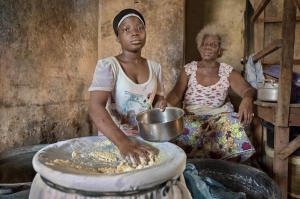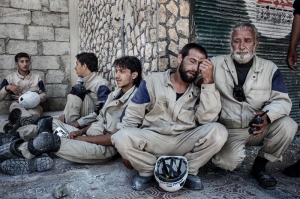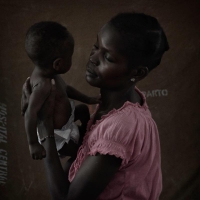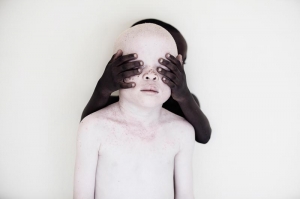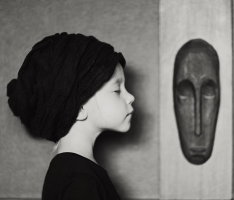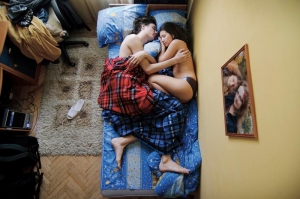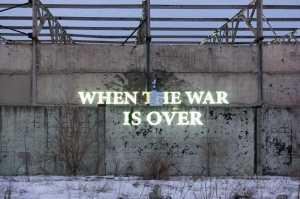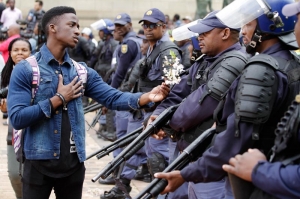The Shortlist of the Alfred Fried Photography Award 2017
Sub-Categories
-
 The Alfred Fried Photography Award 2017 received 4476 submissions with a stunning total of 17147 images!
The Alfred Fried Photography Award 2017 received 4476 submissions with a stunning total of 17147 images!
-
The submitted images came from 122 countries. Top countries are: India, Germany, USA, Russia, Iran,UK, China.
In a first step the international jury created a shortlist of 26 entries.
In the course of the discussion the jury decided to add a separate single entry shortlist.
In the jury meeting at the Austrian Parliament’s Palais Epstein on Friday, 14 July 2017, the jurors discussed which five shortlisted entries will be awarded the Alfred Fried Photography Award Medail. And finally, out of this five winners the overall winning image that will be named "World's Best Picture on the Theme of Peace" was defined. Additional the jury decided to honor the best single picture entry with a Special Award of the Jury. The winning image will be on display for one year at the Austrian Parliament and will be included in the permanent art collection of the Austrian Parliament. The winner will receive € 10.000, the Special Award of the Jury € 1.000 – sponsored by the phg (Photographische Gesellschaft).
The five winners and the winner of the special award were immediately informed by phone or e-mail and invited to travel to Vienna to attend the Alfred Fried Photography Award 2017 ceremony on 14 September 2017.
The winning images will be publicly announced on 14 September 2017.
The shortlist is in alphabetical order.SHORTLIST Alfred Fried Photography Award Medail
Click on a title to see the images. A new life for Indian widows Xavier Zimbardo
Alive happily, alive strongly Zongren Xing
Angels burnt Younes Khani
Auroville, the last Utopia David Klammer
Culture is future Gabriel Tizón
Farewell to the winter Vladimir Viatkin
Fields of Battle: 1914-1918 Michael St Maur Sheil
Invisibles Andres Millan
Like a bird Johanna-Maria Fritz
New sisters Carla Kogelman
Nomad's land Yoann Cimier
On his own Paweł Franik
Peace is the greatest thing! Cletus Nelson Nwadike
Poonam's tale of hope Alex Masi
Quotidian Alain Laboile
Relics of the Cold War Martin Roemers
Smiles in white coats Vladimir Viatkin
Taking a stand in Baton Rouge Jonathan Bachman
The Earth's circle. Kolodozero Ekaterina Solovieva
The return of a slave child Ana Palacios
Those who save lives JM Lopez
Unconditional love Chris De Bode
Under the same sun Marinka Masséus
Untitled Lena Kaplevska
Waiting Jana Romanova
When the war is over Dmitry KupriyanSHORTLIST Special Award of the Jury (single images)
Click here to see the images. Across the pond M Yousuf Tushar
An innocence that never dies Tomas Fernandez
Children at the window Songge Cui
Children have no choice John Wilhelm
Class Mohammad Golchin
Finding peace Somraj Sahu
Future Arthur Monteiro
Happines Daniel Saputra
Happiness Antonio Aragon Renuncio
Hope for peace Rebecca Levisman
I can fly Badru Sultan Katumba
Joy Dines Mukherjee
Joy of childhood Raju Ghosh
Laughter and love in Iraq Tommy Trenchard
Lotus against violence Omar Havana
Marriage in wartimes in Congo Bettina Flitner
Peace for everyone Afshin Azarian
Playing kites I Made Dana
Song for peace Isabela Lyrio
Taking a stand in Baton Rouge Jonathan Bachman
The battle for Wits University Cornell Tukiri
The joy of a grandfather and his grandchild Jinhui Hu
Transition Songge Cui
White flag Natasha Mandal
-
 Xavier Zimbardo, France
Xavier Zimbardo, France
-
A new life for Indian widows
Some 40 million of the world's widows live in India. Surrounded by indifference and contempt, they have to beg in the streets to survive. After the death of her husband, a woman is worth hardly anything. Social reformer Dr. Pathak launched the fight for widows in 2012. He organized a series of welfare measures, but first of all he listened to them with love and care, respect and dignity. They were excluded from religious ceremonies. To counteract ingrained traditional ideas, he decided to set spectacular examples. Hundreds of widows celebrated festivals of colours forbidden to them. Doing something so different in traditional India started a shockwave. India is experiencing a peaceful revolution that will be nonetheless profound and irreversible.
Photos by Xavier Zimbardo
-
 Zongren Xing, China
Zongren Xing, China
-
Alive happily, alive strongly
The husband called Liu Hai lost his arms in an operation because of an electric shock, the wife called Li Meiwen lost her legs by mistakenly stepping on mines when she was 13 years old. They met each other on TV and fell in love, they overcame the physical incompleteness. Now they have a clever daughter, they carry water, cook, do farming, own an electric car and pick up their daughter from school and do housework, like every ordinary family, full of hope for the future, a family of three happy people...
Photos by Zongren Xing
-
 Younes Khani, Iran
Younes Khani, Iran
-
Angels burnt
Somayeh Mehry (30) and Rana Afghanipour (4) are mother and daughter living in a village called Hemet Abad located in Bam, a city in the south of Iran. They were attacked with acid by Somayeh’s husband Amir. Somayeh was beaten up by her husband ten times and imprisoned in a room. Finally, Somayeh asked her husband for a divorce because of her husband's violent behavior. Amir, Somayeh's husband threatened his wife that he would ruin her life, destroy her life and stop her from stepping outside her house ever again, if she filed for a divorce. One night in June 2011, he poured acid on Somayeh and Rana as they slept. Somayeh’s and Rana’s faces, hands, and part of their bodies were severely burnt.
Photos by Younes Khani
-
 David Klammer, Germany
David Klammer, Germany
-
Auroville, the last Utopia
Auroville, the 'City Of Dawn' was founded in 1968 in southern India to create a society to live in peace and progressive harmony. Today 2,800 people from around 50 countries live in Auroville and the place is getting more attractive for volunteers and new citizens from year to year. There are some official principles: no money, no alcohol, no real estate property for individuals or groups. All is owned by Auroville itself. The citizens receive a maintenance for their basic needs. There is no mayor in Auroville, decisions are made by working groups in lengthy processes. And most Aurovilians are highly dedicated to what they love most: work. People have been living together in peace for almost 50 years regardless of the colour of their skin, religion, or background.
Photos by David Klammer
-
 Gabriel Tizón, Spain
Gabriel Tizón, Spain
-
Culture is future
In Africa there are still too many countries whose inhabitants live in extreme poverty. In many of them it is because corrupt governments slow down the advancement of culture to manipulate people, often generating violence and lack of organization for social development. Education and culture are the future and the protagonists of these photographs, taken in very poor villages, are struggling to receive the education to some day change the values of a society and improve the quality of life of all.
Photos by Gabriel Tizón
-
 Vladimir Viatkin, Russian Federation
Vladimir Viatkin, Russian Federation
-
Farewell to the winter
Russian national traditions are most vividly manifested in Shrovetide. During this holiday, the historical, religious and everyday elements of the life of the Russian people are interlinked. This holiday is known for its hospitality, daring, fun and a long feast. Many people in different regions of Russia wear historical costumes. At the end of the holiday a large female doll is burnt to symbolize the arrival of spring. Maslenitsa festival (Pancake Week, Shrovetide) - the holiday which celebrates the end of winter and marks the arrival of spring. Suzdal, Russia. The series was made during 2010-2017.
Photos by Vladimir Viatkin
-
 Michael St Maur Sheil, United Kingdom
Michael St Maur Sheil, United Kingdom
-
Fields of Battle: 1914-1918
Fields of Battle, Lands of Peace 1914-18. One hundred years ago a veteran of WWI wrote "I saw that bare country before me...the miles and miles of torn earth, the barbed wire, the litter, the dead trees. But the country would come back to life, the grass would grow again, the wild flowers return, and trees where now there were only splintered skeleton stumps … below the singing larks, beside the serenely flowing rivers.” Today time and nature have healed the scars of war and what were once fields of battle, full of death and horror, are now landscapes of great beauty and tranquillity, and these photographs are a celebration of that soldier's vision of the peace that would follow the war. They cover all the theatres of WW1.
Photos by Michael St Maur Sheil
-
 Andres Millan, Colombia
Andres Millan, Colombia
-
Invisibles
I was diagnosed with paranoid schizophrenia between the age of seven and twelve, and this was the trigger to generating this process about people with 'disability' and their caregivers. To turn the spectator into a witness and establish dialogues a little more inclusive in the face of adversity. We made their stories visible with the excuse of art, we create community meetings, encourage the creation of micro-enterprises, hold productive fairs and art exhibitions as a way to give a voice to those people who are hardly heard. It must be understood that they are not people "with lack of capacity", they simply are people with other types of skills. They understand that the limitations are those that we impose on ourselves and are not exactly physical.
Photos by Andres Millan
-
 Johanna-Maria Fritz, Germany
Johanna-Maria Fritz, Germany
-
Like a bird
In my long-term project 'Like a Bird' I deal with circuses in Muslim countries and the desire for freedom in conflict areas. Seen from an outside perspective, e.g. someone from the 'West', one does not associate countries like Iran, Palestine or Afghanistan with the idea of the circus. My photos focus on the artists of the circuses as well as the visitors: How can the circus artists create this kind of free space and which dreams and hopes do they associate with their art? What kind of external effect does the circus create in these countries? A circus is a place free of religion, nationality or skin color and thus a refuge in times of uncertainties or conflict.
Photos by Johanna-Maria Fritz
-
 Carla Kogelman, Netherlands
Carla Kogelman, Netherlands
-
New sisters
Lua (11) and Nandini (11) are sisters. They organized themselves. Three years ago they met and became friends. They both lived in an asylum centre. They played and danced after school. Lua did not have a mother anymore and Nandini did not have a father anymore. At least, Lua’s biological Venezolan mother left the family while Lua was still a baby. Nandini’s biological Indian father had divorced her mother years ago. "Let’s match them," they said to each other. They came up with a plan, their father and mother should drink a lot of tea together...
Photos by Carla Kogelman
-
 Yoann Cimier, Tunisia
Yoann Cimier, Tunisia
-
Nomad's land
In Tunisia, local people settle at public beaches every summer, improvising an ephemeral habitat for the day, a micro-architecture connected with nature. Each element of these short-lived camps is a revelation. Observing how the local population takes possession of the seaside reflects the dynamics and diversity of Tunisian society. Behind the simplicity of form, the combination of these elements are complex causal relations: economic, social and cultural data are determined by the architectural answer. Formal expression of Tunisians’ mythical and spiritual relationship. Tunisians in their environment, this micro nomadic architecture has the virtue of showing us the opportunity to re-create at a human scale, a small paradise on earth.
Photos by Yoann Cimier
-
 Paweł Franik, Poland
Paweł Franik, Poland
-
On his own
The photographic series entitled 'On His Own' shows a human as an individual, as a loner in a large space that surrounds them. The purpose of this series is to draw attention to the state of being alone, just with one’s own self. Very often, the viewers blame photographers for showing the sad picture of loneliness. I show this loneliness as something peculiar, something entirely human. Because every one of us, whether lonely or living in a happy relationship and having their own family, needs their moment of loneliness, the moment of devoting attention to themselves, to their own thoughts and reflections.
Photos by Paweł Franik
-
 Cletus Nelson Nwadike, Sweden
Cletus Nelson Nwadike, Sweden
-
Peace is the greatest thing!
I was born in 1966, and in July 1967 a war started and my people were almost eliminated from this planet. 2 million of my people were killed. Our humanity was taken from us and our faith was almost destroyed. It was dark and the darkness continued a long time after the war. I grew up without seeing any picture, because the soldiers had burnt all our photographs. My dad said that I looked like my grandfather, but I had never seen my grandfather or a picture of him. Now the war has ended, but the human heart is still in pain. I left my country and studied photography at a university in Sweden. I have found and built a new family that no war can take away because this country has known peace for 200 years. Peace is the greatest thing...
Photos by Cletus Nelson Nwadike
-
 Alex Masi, United Kingdom
Alex Masi, United Kingdom
-
Poonam's tale of hope
In 2009, I visited Bhopal, India, to document the illnesses of children, resulting from water poisoned by the corporation Union Carbide, also responsible for the 1984 Gas Tragedy. Living with his family in a broken home, one such victim is Sachin, now 22, suffering from paralysis. On a fateful day, his sister Poonam, then 6, was revelling in the monsoon rain to curb the heat. I started taking pictures. Two years on, in 2011, a frame from that moment was offered a prize by 'The Photographers Giving Back', to help Poonam, 14, and her family. Amid Bhopal’s tragedies, it fascinated me to witness the passion that is moving them along, and how a chance for change was able to spark such a vibrant enthusiasm for life.
Photos by Alex Masi
-
 Alain Laboile, France
Alain Laboile, France
-
Quotidian
In his giant outdoor studio where he controls space, time and light, Alain laboile watches his six children. He captures moments of nothing, the unexpected as the expected, the blooming as the outbreak, imagination as banality. His tracking shots put everything on hold: the passage of time, the waltz of the clouds, the leaves in the wind. He shapes the humble material of everyday life like organic matter, enchanting it. It is certainly not paradise, nor the angels' dream life. It is simply life; just life and nothing else. Julie Guiyot Corteville, Chief curator of the French Museum of Photography.
Photos by Alain Laboile
-
 Martin Roemers, Netherlands
Martin Roemers, Netherlands
-
Relics of the Cold War
The Cold War is over - yet some relics still exist. For forty years, the Iron Curtain divided the countries of Europe into East and West. The arms race was unleashed, nuclear fallout shelters were constructed, and everyone braced for the worst. I have spent ten years in search of the traces of this period, traveling through the countries of former enemies on both sides of the line. I explored and documented underground tunnels, abandoned system control centres, deserted army barracks, rotting tanks, and destroyed monuments. These photographs are a stark and moving document of this era of hostility, deterrence politics, and the arms race - and also serve as an appeal for future peace.
Photos by Martin Roemers
-
 Vladimir Viatkin, Russian Federation
Vladimir Viatkin, Russian Federation
-
Smiles in white coats
The public charitable organization 'Doctor clown' is support by well-known actors, economists, and lawyers. They spend all their free time working with children who are seriously ill. They invest all their professional skills and human feelings and the spiritual and moral support in seriously ill children. Smiles in white coats are a hope for recovery and a life of happiness. 1972-2017. Regions of the Soviet Union and Russia.
Photos by Vladimir Viatkin
-
 Jonathan Bachman, United States
Jonathan Bachman, United States
-
Taking a stand in Baton Rouge
Lone activist Ieshia Evans stands her ground while offering her hands for arrest as riot police charge towards her during a protest against police brutality outside the Baton Rouge Police Department in Louisiana, U.S. on July 9, 2016. Evans, a 27-year-old Pennsylvania nurse and mother to a young boy, traveled to Baton Rouge to protest against the shooting of Alton Sterling, a 37-year-old black man and father of five, who was shot at close range while being held down by two white police officers. The shooting, captured on cell phone videos, aggravated the unrest that has coursed through the United States for two years over the use of excessive force by police, especially against black men.
Photo by Jonathan Bachman
-
 Ekaterina Solovieva, Germany
Ekaterina Solovieva, Germany
-
The Earth's circle. Kolodozero
Fifteen years ago three rebellious friends from Moscow were strolling trough the North searching for the meaning of life until they ran into the beautiful village of Kolodozero. In 2001, they started rebuilding the local church which was burnt in 1977. One of them, the red-haired punk Arkady Shlykov stayed there forever and became a priest in the new church. At first the stern locals met the rockstar-resembling priest with much suspicion, but later on came to love him wholeheartedly. Thanks to Arkady and his willingness to help the village 'came to life'. He became its heart and soul, motivated the people and started a new phase in their developement. A year ago new arrivals established a cow farm that creates additional jobs for local inhabitants.
Photos by Ekaterina Solovieva
-
 Ana Palacios, Spain
Ana Palacios, Spain
-
The return of a slave child
There are an estimated 168 million child slaves today(1). Human trafficking is the third most lucrative business, after drug trafficking and arms dealing(2). Sub-Saharan Africa, particularly West Africa, has the highest incidence of child trafficking in the world(2). The governments of these countries along with NGOs work in the area, caring for them in centres intended to repair these broken childhoods and reintegrate them with their families or, if that is not feasible, facilitating a professional career option. (1) Recent figures from the World Labour Organization (WLO). http://www.ilo.org/global/topics/child-labor/lang--en/index.htm (2) “Global Report on Trafficking in Persons” (2014) prepared by United Nations Office on Drugs
Photos by Ana Palacios
-
 JM Lopez, Spain
JM Lopez, Spain
-
Those who save lives
Barrel bombs are the biggest killer of civilians in Syria today. The White Helmets have saved more than 90,000 people from the attacks. In a place where public services no longer function, these unarmed volunteers risk their lives to help anyone in need regardless of their religion or politics. Saving lives is their best contribution to peace. More than 50 bombs a day land on some neighbourhoods in Syria, bakeries and markets are the most commonly hit targets. When this happens, the White Helmets rush in to search for life in the rubble fully aware that more bombs may fall on the same site. 175 White Helmets have been killed while saving others. For the work they do, White Helmets were nominated for the Nobel Peace Prize.
Photos by JM Lopez
-
 Chris De Bode, Netherlands
Chris De Bode, Netherlands
-
Unconditional love
Hospital - Beira Central Hospital where acutely malnourished children are treated in the malnutrition clinic. In Mozambique approximately 6% of children under 5 years are chronically malnourished - about 250,000 in total. The causes are HIV, diseases such as malaria, pneumonia or lack of food related to poverty. Treatment of acute malnutrition takes approximately 20 days. The Central Hospital in the city of Beira is the only hospital for four districts. Parents or grandparents are with the children night and day. I got to know them a little better when I visited the clinic. What I saw was unconditional love and this is how I wanted to portray them.
Photos by Chris De Bode
-
 Marinka Masséus, Netherlands
Marinka Masséus, Netherlands
-
Under the same sun
This series was created in collaboration with the Josephat Torner Foundation to raise awareness about the circumstances of people with albinism in Tanzania. In Tanzania, when you have albinism, you are thought to be evil. There even is a price on the head of children with albinism since killing a person with albinism is considered to bring good luck. The fears and superstitions surrounding albinism run very deep in Tanzanian society. So deep that many women who give birth to a child with albinism are told to kill the baby at birth. If she refuses, she and the baby will become outcasts. Many children with albinism are denied the most fundamental human rights. That’s why the mission of Josephat Torner is social acceptance and inclusion.
Photos by Marinka Masséus
-
 Lena Kaplevska, Lithuania
Lena Kaplevska, Lithuania
-
Untitled
Stories about my siblings
Photos by Lena Kaplevska
-
 Jana Romanova, Russian Federation
Jana Romanova, Russian Federation
-
Waiting
Young Russian couples, inhabitants of Saint Petersburg and Moscow, are sleeping in their bedrooms early in the morning. They are preparing to become parents in a few months' time, and the project questions not only their attitude to each other during the pregnancy, but also the way young families live in big cities of modern Russia, 20 years after the fall of the Soviet Union, the country that will be known to their children only from history books.
Photos by Jana Romanova
-
 Dmitry Kupriyan, Ukraine
Dmitry Kupriyan, Ukraine
-
When the war is over
Two civilizations collapse in the heart of Europe and now for the third year this collapse is called war in Ukraine. Ukraine now is between the upper and the nether millstone - on one side there are Western democratic countries and on the other there is the totalitarian Russia with its territorial claims. But all wars end eventually. The main objective of this project is to remind people about the necessity to point out the need to overcome the war and define what will be after it has ended. Will the 'sun shine' on one's head, will it be possible to stop and then move on, because history has shown that everything is relative.
Photos by Dmitry Kupriyan
-
 SHORTLIST Special Award of the Jury
SHORTLIST Special Award of the Jury
-
Click on the picture to see the shortlist
The jury decided to honor the best single picture entry with a Special Award of the Jury. The winning image will be on display for one year at the Austrian Parliament and will be included in the permanent art collection of the Austrian Parliament. The winner of the Special Award of the Jury will receive € 1.000 – sponsored by the phg (Photographische Gesellschaft).
